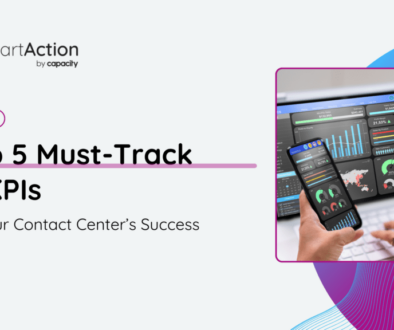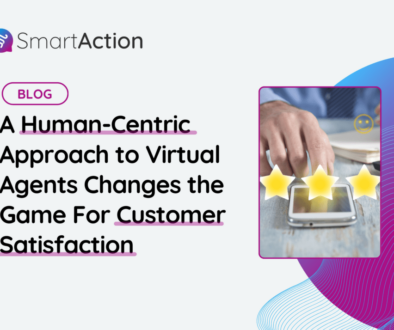The Rapid Rise of Virtual Health Agents in Patient Access
The COVID-19 pandemic is exposing frailties in our already strained US healthcare system. To cope with the surging number of COVID-19 cases, some hospitals are suspending elective procedures and converting operating rooms to ICUs. Medical resources and staff are being diverted to help with testing and treatment of patients diagnosed with the coronavirus.
For healthcare providers, this sheds a stark light on what has been apparent for some time – that measures must be taken to ease the burden on healthcare workers, while also ensuring the general public has access to routine and essential health services.
“Some healthcare services are being compromised in order to meet the demands of caring for COVID-19 patients.” – CDC
Conversational AI in the Age of COVID
Healthcare agencies and public health organizations are seeing a drastic uptick in the number of calls to their contact centers. In some instances, overall call volume has jumped over 600% from normal levels.
Not surprisingly, more and more healthcare providers are turning to conversational AI technology to handle the increase in call volume. From answering symptom-related questions or how to care for potentially infected family members, virtual health agents are helping to deflect calls from inundated contact centers by enabling patient self-service.
By leveraging virtual health agents as the first line of defense, common patient queries can be resolved at mass scale, without the need for human intervention. More importantly, patients have quick access to information and self-service options whenever they need it.
What Virtual Health Agents Can Do for Healthcare
By integrating to an EHR (electronic health record) system such as Epic or Cerner, virtual health agents can handle a variety of healthcare tasks. Below are several proven use cases that SmartAction has been automating for the healthcare industry:
- Intelligent Front Door – Captures intent in natural language, HIPAA-compliant 3-factor authentication, and routes to the appropriate caregiver or department.
- Appointment Management – Helps patients schedule, cancel, or be wait-listed for appointments. Sends SMS and/or outbound calls to remind about upcoming appointments, with the option to reschedule.
- Patient Outreach – Sends proactive SMS messages for prescription refills, tips for general wellness, and notifications regarding preventative care services.
- SDOH/Patient Demographics – Helps patients change their address on record, update profile information, and order equipment/supplies.
- Inbound/Outbound Billing – Allows patients to make bill payments, get balance notifications, and negotiate payment arrangements.
- Symptoms Triage – Deflect COVID-19 related calls to SMS and chat channels, where symptoms can be triaged and determine if an escalation path is required with a callback from a physician or scheduled appointment. EHR platforms have recently exposed APIs for AI to capture new patients that aren’t already in the system.
Watch this short demo of the SmartAction rapid response virtual agent:
Watch how quick and easy appointment scheduling is with the SmartAction virtual health agent:
Benefits of Using a Virtual Agent
Many healthcare organizations are already using virtual agents as part of a digital patient care strategy to improve patient accessibility to services. In addition to empowering patients to self-serve routine tasks in a simple and intuitive way, virtual agents help augment contact center agents.
Virtual agents deliver an additional benefit to healthcare providers – cost savings. Missed appointments cost the US healthcare system a whopping $150B a year. With 88% of patients scheduling doctor appointments through landline phones, and 65% of patients saying they face challenges when trying to engage healthcare providers, it’s more critical than ever to keep the line of communication – whether through voice, chat, or SMS – open.
Want to learn more? Check out our on-demand webinar, SmartAction Rapid Response Virtual Agent for Operational Readiness.






